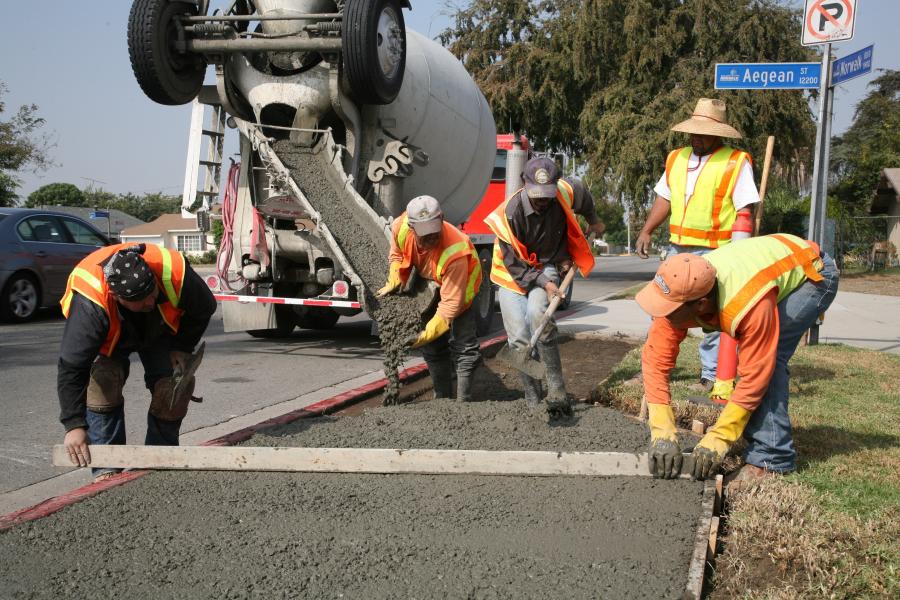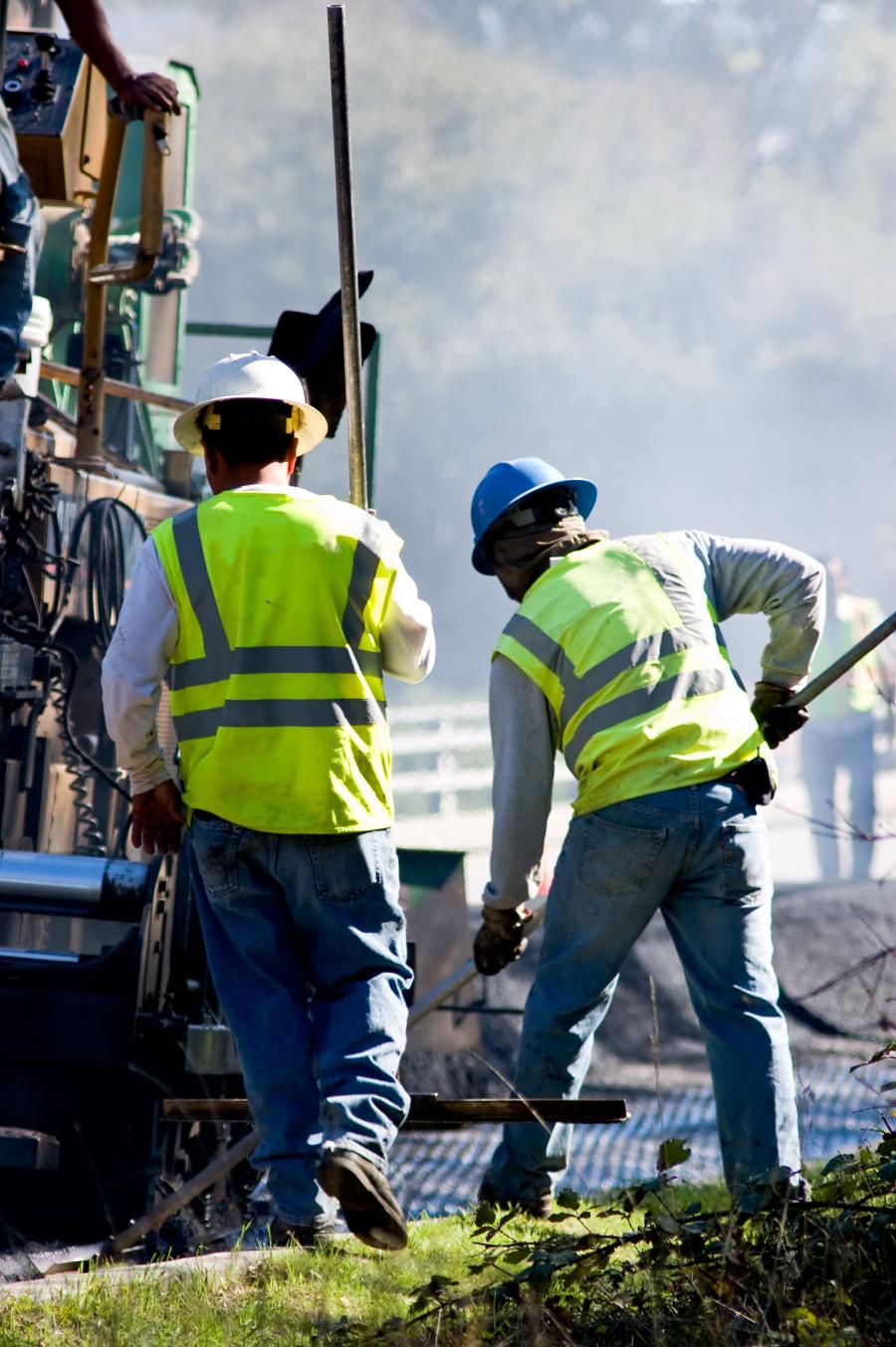Generic COVID-19 workplace guidance doesn’t make sense for the construction industry, and in some instances is redundant, construction associations maintain.
Both ARTBA and the AGC have concerns about the late-January executive order President Joe Biden signed regarding safe workplaces during the COVID-19 pandemic. The guidance follows Biden's request that OSHA decide by March 15, 2021, whether an emergency temporary standard (ETS) is needed.
The OSHA guidance details measures for limiting the coronavirus' spread in any workplace.
Those measures include ensuring infected or potentially infected people are not in the workplace, are following physical distancing protocols and are using masks.
They also provide guidance on use of personal protective equipment (PPE), improving ventilation, good hygiene and routine cleaning.
"Employers and workers can help our nation fight and overcome this deadly pandemic by committing themselves to making their workplaces as safe as possible," said M. Patricia Smith, senior counselor to the secretary of labor.
"The recommendations in OSHA's updated guidance will help us defeat the virus, strengthen our economy and bring an end to the staggering human and economic toll that the coronavirus has taken on our nation."
ARTBA and AGC object to generic COVID-19 workplace protocols that don't make sense for the construction industry.
The AGC analyzed the guidance for members and noted that it's not a standard or regulation and creates no legal obligations.
Industry Weighs In
"The recommendations are advisory in nature, informational in content and are intended to assist employers in recognizing and abating hazards in the workplace," stressed the AGC analysis.
The association also noted that the guidance follows established protocols in place since the pandemic began.
AGC is highly concerned about the number of citations OSHA has issued since the start of the coronavirus pandemic.
Representatives of the organization plan to seek clarification from OSHA on a number of points in the guidance, including information on citations issued to date.
In February, ARTBA warned that a broad, indiscriminate ETS could unintentionally harm workers.
Measures that consider each industry and their respective efforts at COVID prevention provide better protection for workers, maintains the association.
Bradley Sant, ARTBA senior vice president of safety and education, addressed concerns during a Feb. 12, 2021, OSHA listening session.
Certain universal requirements could actually threaten the health of transportation construction workers, noted Sant.
He referred to mask mandates affecting those who labor in hot outdoor environments and are already socially distanced from one another.
Sant also reminded OSHA that the transportation construction sector is already committed to best practices for COVID prevention.
Those practices include working outdoors, keeping at least six feet apart and remaining alone in closed equipment cabs.
The AGC released resources available to its members regarding vaccine policies, including opposing government vaccine mandates.
The association instead supports "construction firms' freedom to choose the best approach for their individual businesses and workforces."
Dave Bauer, ARTBA president, wrote to James Frederick, principal deputy assistant secretary of labor for occupational safety and health, in early February.
ARTBA also is opposed to a one-size-fits-all approach. The association is monitoring OSHA's actions on COVID policy on behalf of its membership.
Guidance's Focus
In analyzing the guidance, AGC referred to the Occupational Safety and Health (OSH) Act's general duty clause.
In the absence of a COVID-19 standard, OSHA has utilized the clause to enforce workplace hazards associated with COVID.
"Since the start of the coronavirus pandemic through Dec. 31, 2020, OSHA issued citations arising from 300 inspections for COVID-19-related violations," noted AGC in its analysis.
These violations resulted in proposed penalties totaling $3,930,381, some of which were issued under the general duty clause.
"AGC is seeking further information on COVID-19-related citations issued to date," the association notified members.
Protocols in place since the beginning of the pandemic include not permitting any ill individuals on the job site; wearing face masks/coverings; practicing social distancing; and routine cleaning and disinfecting.
The AGC noted that the guidance includes several new recommendations:
- Involving employees and their union or other representatives in the development of a COVID19 safety plan. The AGC wants clarification on the involvement of such representatives and their role with regard to existing COVID-19 safety plans.
- Providing information and training on the benefits and safety of vaccinations. The association noted that the U.S. Center for Disease Control and Prevention (CDC) has provided a document that may satisfy this recommendation. AGC is working on a toolbox talk format version of that CDC document to make available for its members.
- Making COVID-19 vaccine or vaccination series available at no cost to all eligible employees. The AGC stressed that "making available the vaccine does not constitute a mandate for employers to require that employees be vaccinated." The association believes employers should offer the vaccine to an employee, whether or not the employee agrees to take it. "Employers simply have to offer the opportunity for vaccination. AGC is seeking clarification on what exactly employers should provide when it comes to the opportunity for vaccination." That includes reasonable compensation time to get their vaccination.
- Minimizing the negative impact of quarantine and isolation on workers. "When possible, allow workers to telework, or work in an area isolated from others," stressed the AGC. "If those are not possible, allow workers to use paid sick leave, if available, or consider implementing paid leave policies to reduce risk for everyone at the workplace." The association noted that the Families First Coronavirus Response Act provides 100-percent reimbursement through tax credits to provide paid sick leave or expanded family and medical leave for reasons related to COVID-19.
- Implementing protections from retaliation and setting up an anonymous process for workers to voice concerns about COVID-19-related hazards. Again, AGC noted that the OSHA Act prohibits discharging or discriminating against an employee for engaging in occupational safety and health activities. "Employers may not discriminate against employees for raising reasonable concerns about infection control to the employer, the employer's agent, other employees, a government agency or to the public." That includes communicating concerns through print, online, social or any other media. The employer may not take action against an employee for voluntarily providing and wearing their own personal protective equipment, either.
- Not distinguishing between workers who are vaccinated and those who are not. Workers who are vaccinated must continue to follow protective measures, such as wearing a face covering and remaining physically distant, noted AGC. "Currently, there is no evidence that COVID-19 vaccines prevent transmission of the virus from person-to-person." The CDC explained that experts need to understand more about the protection that COVID-19 vaccines provide before deciding to change recommendations, maintained AGC.
- Providing guidance on screening and testing. The association urges members to follow state or local guidance and priorities for screening and viral testing in workplaces.
"Testing in the workplace may be arranged through a company's occupational health provider or in consultation with the local or state health department."
Employers should inform workers of employer testing requirements, if any, and availability of testing options.
"The CDC has published strategies for consideration of incorporating viral testing for SARS-CoV-2, the virus that causes COVID-19, into workplace preparedness, response and control plans."
The new guidance also links to industry-specific recommendations, including construction, noted AGC.
"Currently, the information remains unchanged and maintains that construction workers' risk exposure to be generally in the low to medium range."
The current guidance states that in limited circumstances, including situations involving close contact with someone with suspected or confirmed COVID-19, respiratory protection may be needed.
AGC wants clarification on this point. Lastly, the association stressed that the current information is subject to change.
Protecting Employees
The EO directs OSHA to consider whether any ETS on COVID-19 is necessary and if so to issue any by March 15, 2021.
"ARTBA urges the agency to fashion any potential standard collaboratively to achieve the best safety result possible for workers and avoid potential consequences," wrote CEO Bauer.
"A new ETS should consider the specific attributes and existing safety protocols of particular industries, with the objective of not undermining those protections to the detriment of their workers."
He pointed out that the typical work conditions in transportation construction already utilize several best practices for COVID prevention.
ARTBA members work primarily outdoors, in contrast to many other industries and construction sectors, he noted.
"Furthermore, transportation construction personnel are often isolated, operating equipment or performing tasks that facilitate social distancing."
Plus, job sites have incorporated many OSHA-recommended safe practices, wrote Bauer.
"We are concerned that a sweeping COVID-related ETS will not fully reflect the uniqueness of transportation construction work and the resulting COVID safeguards which are already part of our work practices."
Transportation construction's outdoor setting also makes it subject to varying weather conditions.
"An indiscriminate ETS, directed primarily at indoor industries, could require personnel to wear PPE when working outdoors and socially distanced.
"In hotter weather or climates, such a directive could lead to heat stress and other hot-weather hazards when such PPE is not needed."
Like the AGC, ARTBA believes a tailored ETS could protects workers from both COVID and the safety challenges they confront each day, wrote Bauer. CEG
Today's top stories























